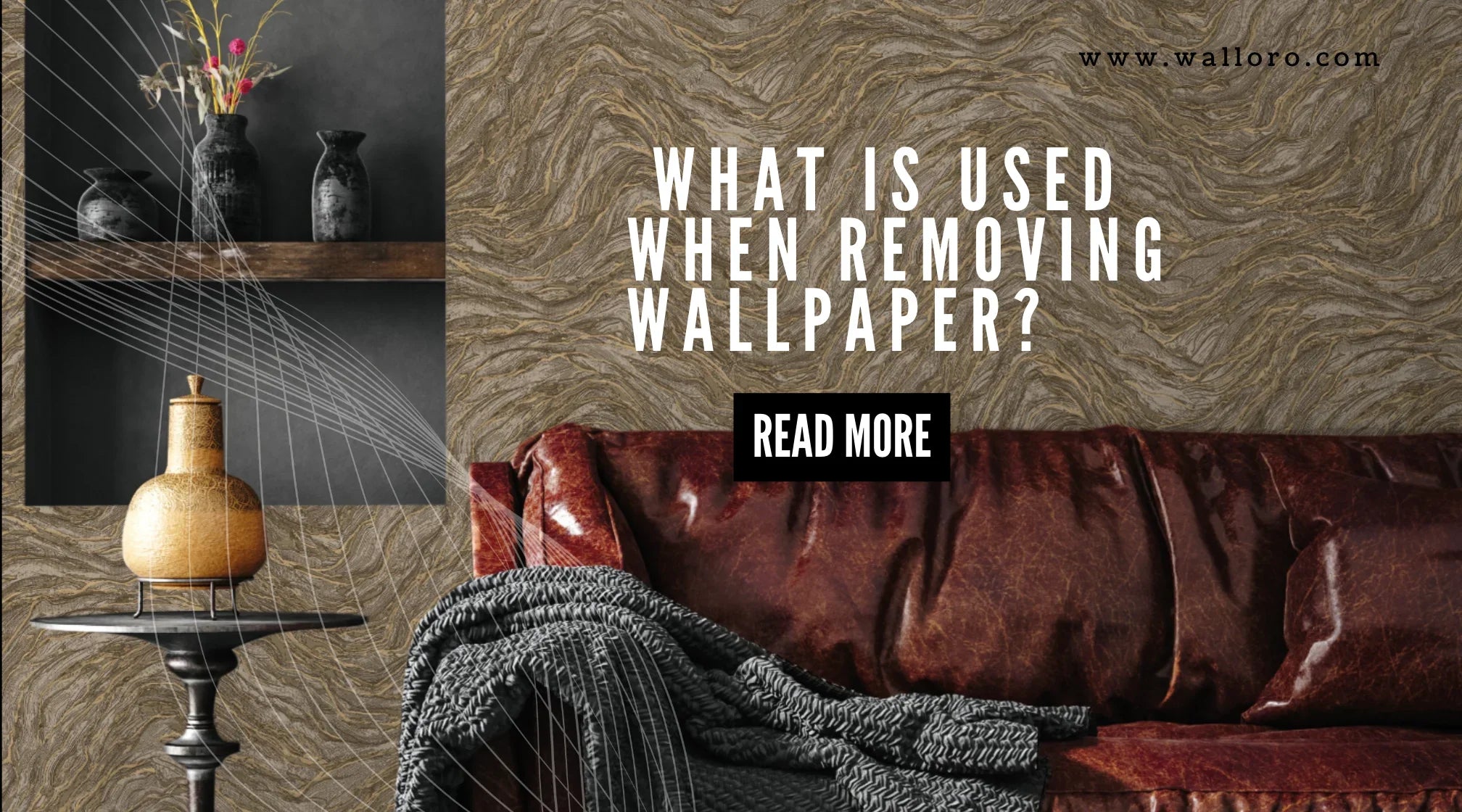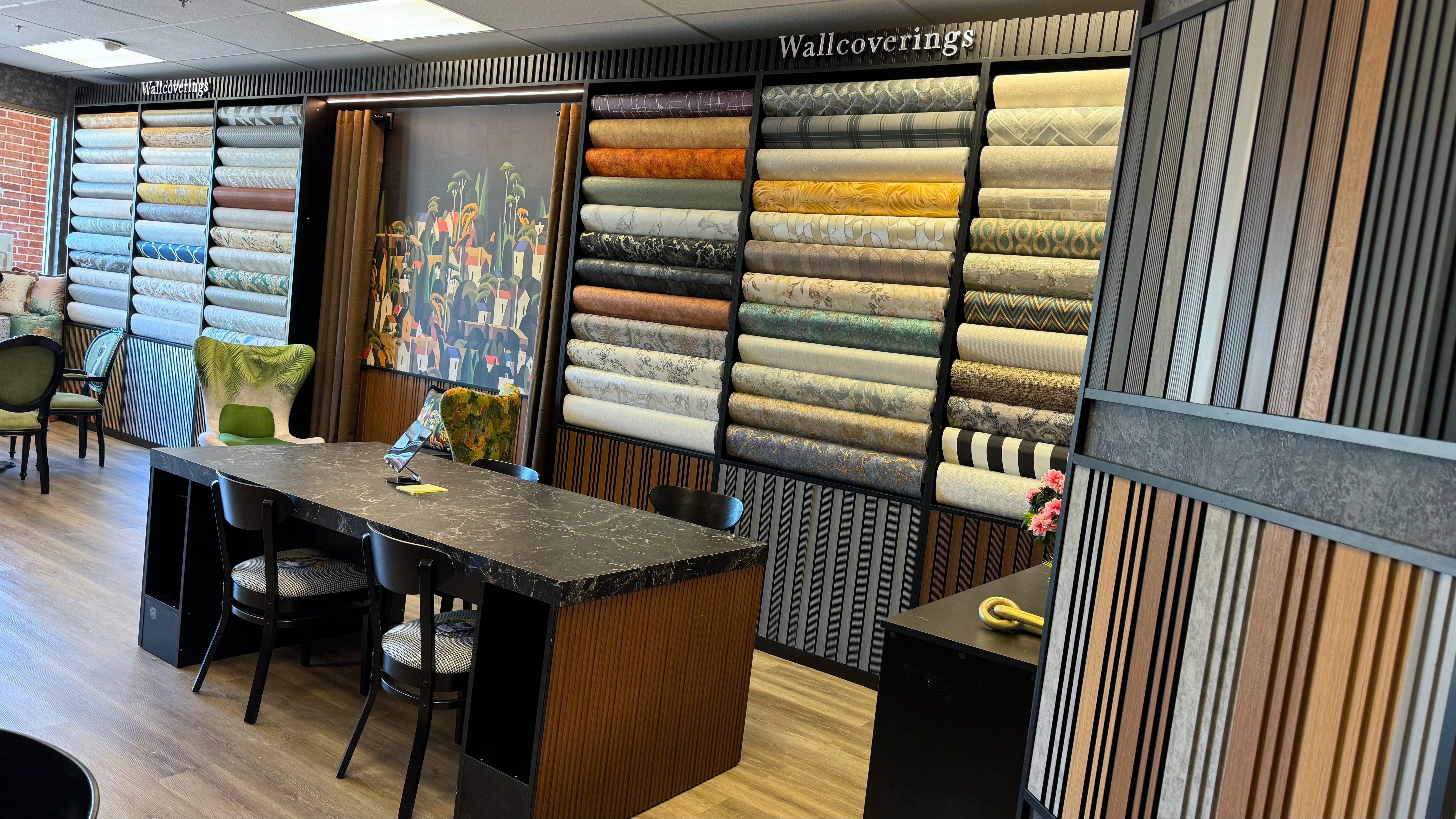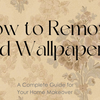What is used when removing wallpaper? Step-by-Step Guide with Tips & Tools

A Practical Wallpaper Removal Guide by Walloro
Removing wallpaper can seem like a nightmare—especially if you're dealing with an old, stubborn layer. But with the right tools, techniques, and patience, it's easier than you think.
Whether you're updating your space or switching from vintage florals to a modern geometric peel and stick wallpaper, this guide will show you exactly how to remove wallpaper without damaging your walls.
At Walloro, we don’t just provide beautiful, premium wallpapers—we also help you manage the full life cycle of your wall decor. That means knowing how to apply, how to care, and yes, how to remove wallpaper when the time comes.
Why Remove Wallpaper the Right Way?
If you peel off wallpaper the wrong way, you could:
-
Damage your drywall or plaster
-
Leave glue residue that ruins your new wallpaper or paint
-
Waste time and energy with ineffective methods
That’s why it’s important to know what tools to use, what type of wallpaper you’re dealing with, and how to work efficiently without mess.
Common Types of Wallpaper & How They’re Removed
Not all wallpapers are created equal. Here’s how to handle the most common types:
1. Peel and Stick Wallpaper
This modern favorite (and a bestseller at Walloro) is the easiest to remove.
How to remove it:
Start from a corner and slowly peel at a 45-degree angle. If it resists, gently heat it with a hairdryer to loosen the adhesive.
Search terms: remove peel and stick wallpaper, easy wallpaper removal, removable wallpaper tips
Walloro’s peel and stick wallpapers are designed for clean, damage-free removal, especially useful in rentals.
2. Traditional Wallpaper with Adhesive
Usually installed with paste, this type may have multiple layers and requires moisture to soften the glue.
How to remove it:
Score the surface, spray with hot water or wallpaper remover, and scrape with a putty knife.
Search terms: how to remove old wallpaper, best wallpaper removal solution
3. Vinyl-Coated Wallpaper
More durable, but harder to soak. You’ll need to score the vinyl layer to let moisture reach the adhesive underneath.
Pro tip: Use a wallpaper perforation tool before applying remover.
Tools You’ll Need to Remove Wallpaper
According to DIY experts at HGTV, these are the most effective tools for removing wallpaper:
Essential Tools:
-
Wallpaper scraper or putty knife
-
Wallpaper scoring tool (perforator)
-
Spray bottle or pump sprayer
-
Sponge and warm water
-
Wallpaper removal solution or vinegar
-
Drop cloths or plastic sheeting
-
Steamer (for stubborn cases)
If you're planning to redecorate with Walloro’s new wallpaper collections, it’s worth doing the prep work right!
Step-by-Step: How to Remove Wallpaper Like a Pro
Step 1: Prepare Your Space
-
Remove furniture or cover it with drop cloths.
-
Shut off power and remove outlet covers.
-
Use a tarp or plastic to protect your floors.
Step 2: Identify the Wallpaper Type
Try peeling a corner. Does it come off clean? If yes, it's likely peel-and-stick. If it resists or tears, it's traditional or vinyl.
Step 3: Score the Wallpaper
Use a scoring tool to make small holes in the surface, especially for vinyl wallpaper. This lets moisture soak in.
Step 4: Apply Wallpaper Remover
Use a store-bought remover (like Zinsser DIF or Roman’s Wallpaper Remover) or mix your own with warm water + vinegar or dish soap.
Spray generously and let it soak for 10–15 minutes.
Search terms: DIY wallpaper remover, vinegar for wallpaper removal
Step 5: Scrape Carefully
Using a wallpaper scraper or putty knife, lift the wallpaper at the seams and gently pull. Don’t gouge the wall!
Repeat soaking and scraping as needed.
Step 6: Clean the Wall
Wipe down the wall with a sponge and warm water to remove any glue residue. Let dry fully before painting or applying new wallpaper from Walloro.
Using a Wallpaper Steamer: When & How
For very old, layered, or stubborn wallpaper, a steamer may be necessary.
How it works:
The steamer softens the glue behind the paper using hot vapor. Hold it over the wallpaper for 10–15 seconds, then scrape gently.
Search terms: best steamer for wallpaper removal, how to use wallpaper steamer
Walloro recommends using a steamer only if you're experienced or the job is large. Otherwise, go slow with water and patience.
What NOT to Do
Don’t rush. Pulling too fast can tear the drywall.
Don’t oversoak—especially on drywall, it can damage the surface.
Don’t use metal tools aggressively.
Don’t forget to ventilate the room during the process.
Why Walloro Wallpapers Make Removal Easy
At Walloro, we design wallpapers that are not only beautiful and durable—but also practical.
Peel and Stick Collection: Designed to come off clean, no residue.
Premium Adhesive Papers: Engineered for secure hold but easier softening during removal.
Low-VOC glue options: Safe for your walls and the planet.
Easy Install = Easy Remove
Plus, our wallpapers come with detailed instructions on both application and removal—because we care about your space before and after the wallpaper is on.
Ready for a Fresh Start?
Whether you're removing wallpaper to repaint, or prepping your walls for a new design from Walloro, doing it right ensures a clean surface and beautiful results.
Visit www.walloro.com to explore our latest removable wallpaper designs and home makeover tips.












